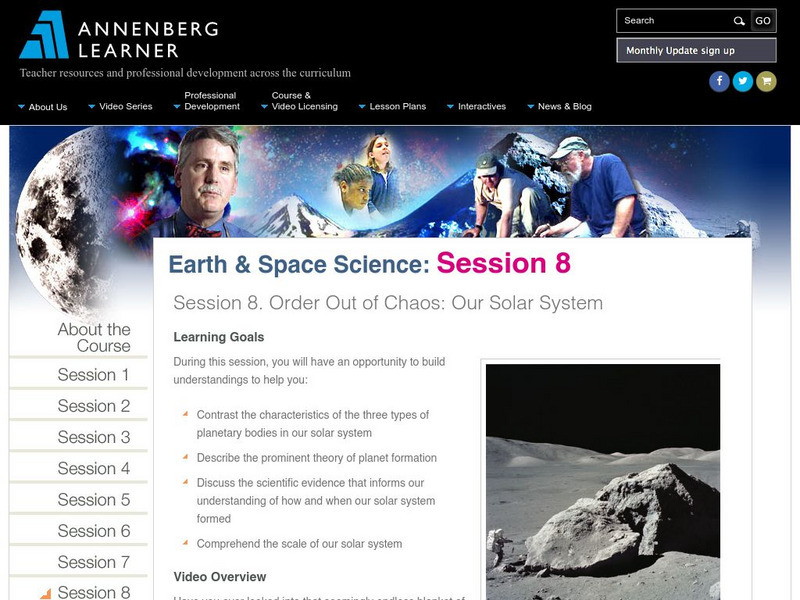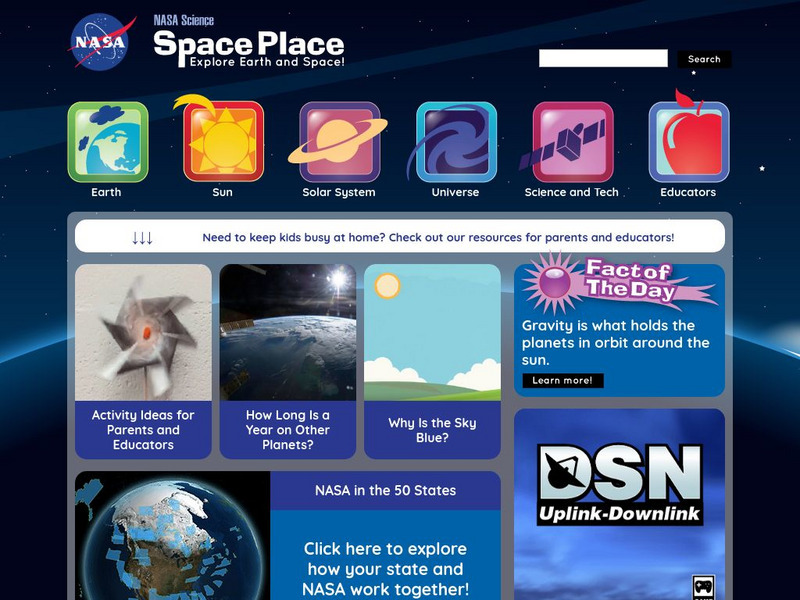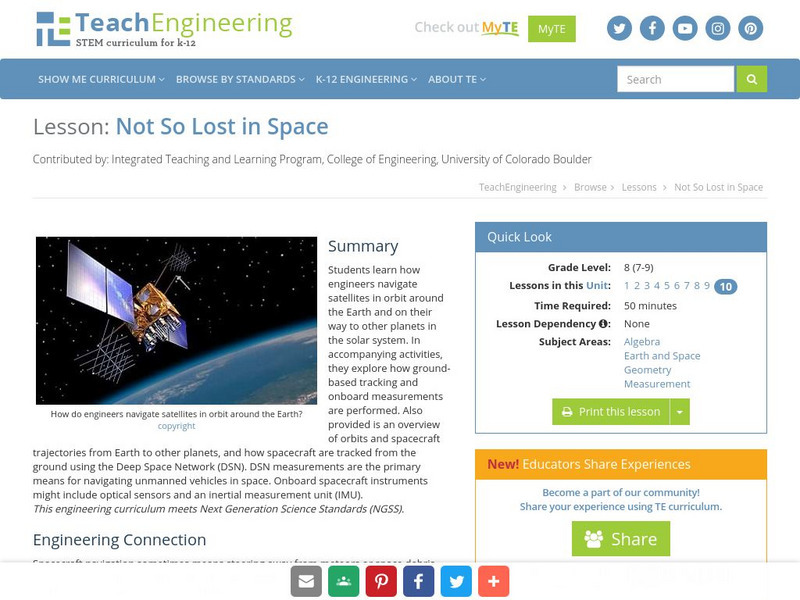Curated OER
Using Bloom's Taxonomy in Science
Help your students internalize knowledge by creating activities that utilize higher level thinking skills.
Curated OER
Planet Paths: Studying Planetary Orbital Paths
Students define and identify planetary orbit, ellipse, parabola, and hyperbola, and simulate Kepler's Second Law. They explore interactive websites demonstrating orbital motion and complete modeling activities.
Curated OER
Kepler and his Laws
Students examine Kepler's Laws. They confirm Kepler's 3rd law by comparing orbital periods and mean distances for all major planets and study conic sections, qualitatively.
Curated OER
Write On! Step by Step Paragraph and Report Writing
Students plan and write paragraphs while integrating other core subject areas. In this paragraph writing lesson, students complete 5 lessons to practice writing paragraphs. Students incorporate various core subjects into their paragraph...
Curated OER
Star Frames
Fourth graders study constellations. In this space science lesson, 4th graders discover what makes stars, how bright stars are, and why constellations were created. Students make their own constellation using Saran Wrap and a frame.
Curated OER
Cosmic Collisions and Risk Assessment
In groups, learners create their own scientific impact experiments using ordinary materials, and observe and measure results with a variety of impacting bodies and velocities.
Curated OER
Understanding Cloud Formation
Students view a demonstration that simulates cloud formation. They read a poem about clouds, participate in a class demonstration using warm water and ice and write a paragraph summarizing their observations.
Curated OER
Specializing in Space
In this literature book review activity, students read a nonfiction book about space or space exploration before choosing a topic to explore further. They choose from 7 activities such as designing a model, writing a letter, write about...
Curated OER
Sources of Electricity
In this online electricity worksheet, students are asked 10 questions about electric current and battery energy, an online answer key provided.
Curated OER
Every Tree For Itself
Fourth graders play a game where they are trees gathering sun, water, and nutrients and CO2 represented by pieces of paper or poker chips. They record their collected requirements and graph how they grew as a forest.
CK-12 Foundation
Ck 12: Earth Science: Planets of the Solar System
[Free Registration/Login may be required to access all resource tools.] Examines the eight planets of our solar system and their orbits and rotation.
Annenberg Foundation
Annenberg Learner: Earth and Space Science: Order Out of Chaos: Solar System
Material to begin an exploration of the Solar System: the characteristics of the planets, theories about planet formation, and more. An hour-long video is accompanied by learning goals, an outline and overview, details on star formation,...
NASA
Nasa: Star Child: Elementary Astronomy Unit
Learn everything you can about outer space with this interactive astronomy unit. 2 levels of difficulty with modules on the solar system, the universe, other "space stuff" and a glossary of terms. Links for parents and other great website.
Khan Academy
Khan Academy: Video Transcripts
A collection of video transcripts from a unit on the solar system and Earth.
Alabama Learning Exchange
Alex: Beyond the Earth Part Ii
A continuation of Beyond the Earth Part I. As part of a unit on the solar system, students will choose a component of the solar system to research. Students may use a variety of resources such as the Internet, books, and reference...
Alabama Learning Exchange
Alex: Phases of the Moon
This lesson will familiarize learners with the phases of the moon. It can be taught in a unit dealing with the solar system. It involves all learning types-kinesthetic, auditory, tactile, and visual.
Enchanted Learning
Enchanted Learning: The Planets
This survey of the planets includes all the basics, size, mass, atmosphere, length of day, and the like. It features interactive activities and learning exercises and compares all of the planets in colorful tables.
Utah State Office of Education
Utah State Office of Education: How Did the Universe and Solar System Develop?
Explore this unit to learn how the universe began. Through illustrations, videos, and classroom activities, gain an understanding of how stars help with the formation of elements.
TeachEngineering
Teach Engineering: Not So Lost in Space
Students learn how engineers navigate satellites in orbit around the Earth and on their way to other planets in the solar system. In accompanying activities, they explore how ground-based tracking and onboard measurements are performed....
National Geographic
National Geographic: Planetary Size and Distance Comparison
Students review the sizes of planets and their order relative to the Sun. They then learn about astronomical uses and create a model of the solar system that reflects planetary distances. Includes handouts and worksheets as well as a...
Texas Education Agency
Texas Gateway: Ap Physics I: Appendices: Useful Information
This page provides eight tables of useful information such as Important Constants, Submicroscopic Masses, Solar System Data, Metric Prefixes for Powers of Ten and Their Symbols, The Greek Alphabet, SI units, Useful Formulae, and other...
Khan Academy
Khan Academy: Guide, Slides, and Text Reader
Resources for teachers for the big history project. Includes a teaching guide, unit slides, and text reader.
TeachEngineering
Teach Engineering: Space
In this unit, students first are introduced to the historical motivation for space exploration. They learn about the International Space Station and are introduced to new and futuristic ideas that space engineers are currently working on...























